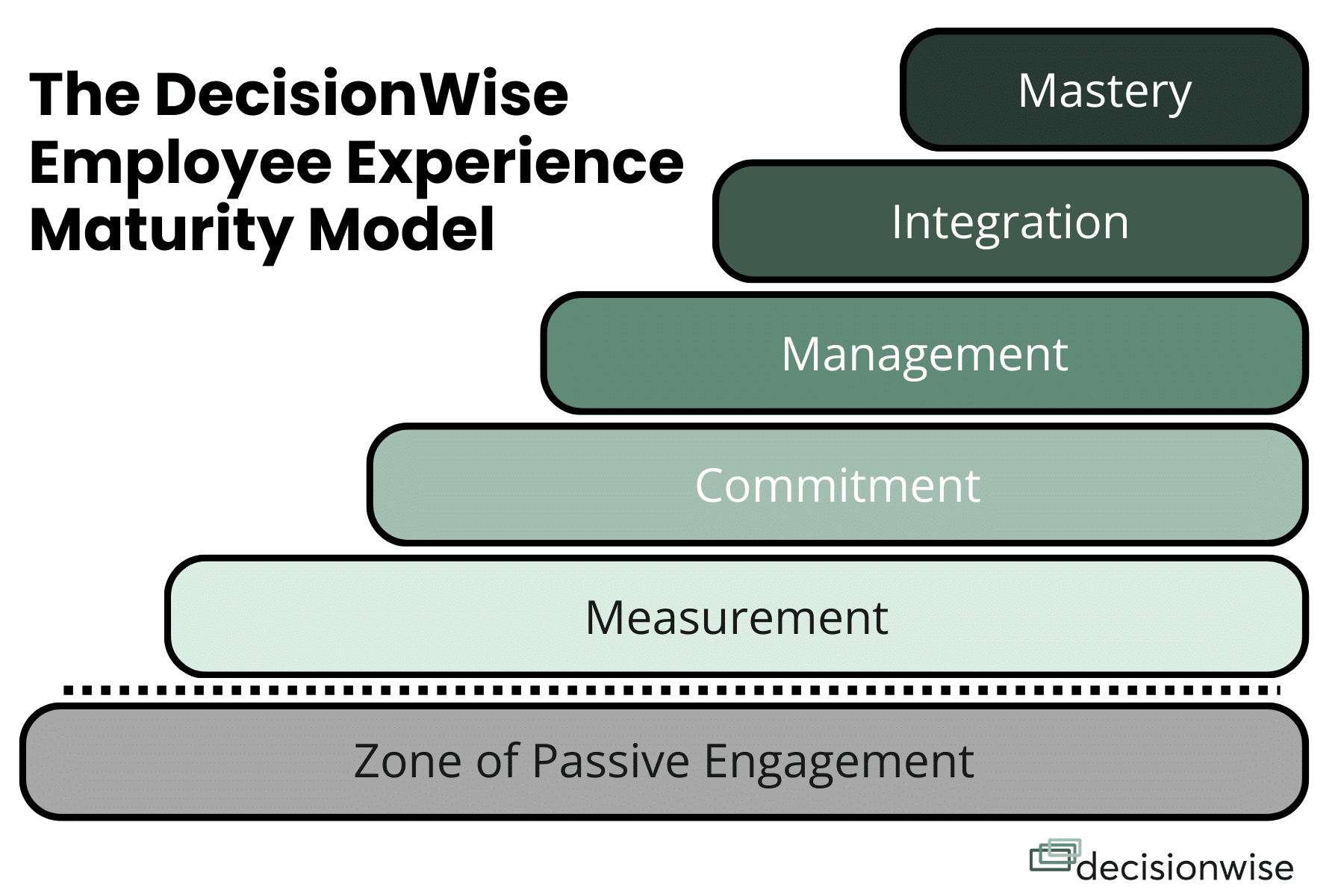- It is easy to become engaged in my job.
- I would recommend This Company as a great place to work.
- Most days I look forward to coming to work.
- My job provides me with a sense of meaning and purpose.
- I have the freedom to choose how to best perform my job.
- I feel challenged and stretched in my job in a way that results in personal growth.
- Most days, I see positive results because of my work.
- I feel like I belong here.
- What are the greatest strengths of our organization?
- What are the areas that need the most improvement in our organization?
Why these 10 questions?
Employee engagement surveys normally include between 35 and 50 questions organized into themes or frames of reference. These groups often consist of survey questions about employee satisfaction, employee morale, the job, team, manager, and overall organization. Other questions measure topics like leadership, values, safety, communication, teamwork, training, and company employee benefits. But these are 10 questions are important because they cover three key areas:
- Employee survey questions to measure the overall level of employee engagement
- Engagement driver questions to understand what contributes to engagement
- Open-ended questions to understand the reasons behind the scores
Questions to Measure Overall Employee Engagement
Many organizations make the mistake of calculating engagement by either using the average score of all employee engagement questions or the result of just one survey question. Both methods result in an inaccurate measurement of engagement that we cover in the post, How to Measure Employee Engagement.
Engagement anchor questions are designed to measure how engaged an employee feels in his or her workplace. We recommend using the results from five anchor questions to calculate your employees’ engagement level. Here are three sample anchor questions to measure the overall level of employee engagement:
It is easy to become engaged in my job.
This anchor question indicates how involved a person feels in their work. Does time fly by when working on a project? Is the work interesting or fulfilling?
I would recommend This Company as a great place to work.
This anchor question evaluates the level of commitment a person feels towards their company. It indicates how much pride is felt by working at the company. This question is often used as an employee Net Promoter (eNPS)
Most days I look forward to coming to work.
Belonging is most often the primary driver of employee engagement levels in an organization. When employees understand how their work impacts the organization, work becomes meaningful.
Employee Engagement Survey Questions to Measure the Drivers of Engagement
Based on the latest research, there are five key drivers of employee engagement: these include meaning, autonomy, growth, impact, and connection. Here are five employee survey questions that measure the drivers of employee engagement:
Meaning: My job provides me with a sense of meaning and purpose.
Do employees find meaning and purpose in their jobs? Does their work make a difference for themselves or others?
Autonomy: I have the freedom to choose how to best perform my job.
Do employees find autonomy in their jobs? Do they have freedom, self-governance, and an ability to make choices about their work?
Growth: I feel challenged and stretched in my job in a way that results in personal growth.
Does the job provide development and growth opportunities? Does the work challenge and stretch employees to grow and improve?
Impact: Most days, I see positive results because of my work.
Do employees see impact and feel like they are successful in their work? Do they see that their effort makes a difference and contributes to the overall success of the company’s mission and organizational goals?
Connection: I feel like I belong here.
Do employees have a personal connection with the people they work with, their boss, and the social community of the workplace? How is employee communication within the workplace?
Open-ended Employee Engagement Survey Questions
Open-ended comments provide a wealth of qualitative information and detail on the reasons behind employee engagement survey scores. We recommend using two simple open-ended questions:
- What are the greatest strengths of our organization?
- What are the areas that need the most improvement in our organization?
Our research shows that using more than two open-ended questions significantly lengthens the time it takes to complete the employee survey and doesn’t yield much additional qualitative information in the survey results.
These 10 questions are a good start to building an employee engagement survey and improving your company culture. Additional questions should be included that measure satisfaction elements to better attract and increase employee retention. A well-designed employee engagement survey will produce an accurate overall engagement metric while providing several data points for actionable insight/planning at all levels in the organization to create an engagement strategy, starting from the senior leadership team and moving downward.



